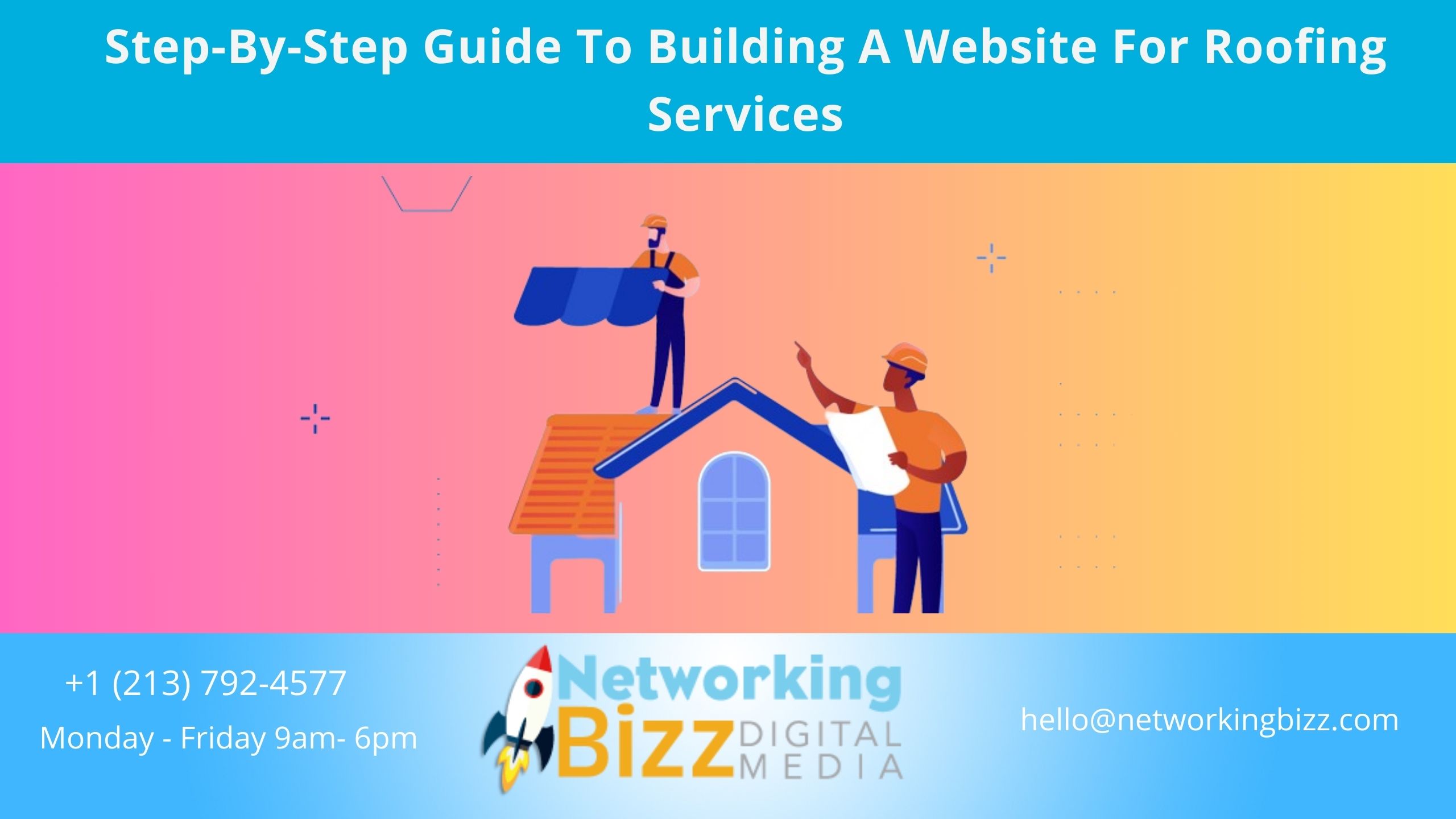Introduction
Creating a strong online presence for your roofing services through a well-designed website is crucial in today’s digital landscape. Let’s outline the steps and strategies to effectively create a website for your roofing business, incorporating tactics like roofing company website design to enhance visibility and attract potential customers.
Step 1: Define Your Objectives And Target Audience
Before beginning the website building process, it’s critical to define your goals and target audience. Consider what you want to achieve with your website, such as generating leads, showing your portfolio, or offering instructive content about roofing services. Understand your target audience’s demographics and preferences so that your website can be tailored accordingly.
Networkingbizz’s goal could be to attract local homeowners in need of roofing repairs or installations. Understanding that their target audience consists of homeowners from diverse demographics can help shape the content and style of their site.
Step 2: Select A Domain Name And Hosting Provider
It is critical to choose a domain name that accurately represents your company and is simple to remember. Ideally, it should include your company’s name or relevant keywords like “roofing services” or your address. Once you’ve decided on a domain name, find a reputable hosting company that provides adequate uptime, security features, and scalability to meet your website’s requirements.
For Networkingbizz, a domain name like “networkingbizzroofing.com” could work. They could choose a reliable hosting company to ensure that their website is constantly accessible and safe.
Step 3: Choose A Web Platform
There are several website construction platforms accessible, each with their unique set of features and ease of use. Popular choices include WordPress, Wix, Squarespace, and Weebly. Before making a decision, evaluate these platforms based on your customization, SEO requirements, and scalability needs.
Networkingbizz may choose for WordPress as their website platform due to its ease of use and versatility. Its large library of plugins and themes enables customisation based on their branding and service offerings.
Step 4: Design Your Website
When designing your roofing company’s website design services, it’s essential to showcase your expertise effectively. Highlighting completed projects through high-quality photos and including client testimonials can build credibility. Make sure your design emphasizes easy navigation and includes clear calls-to-action to guide visitors. Additionally, a dedicated section explaining how your tailored website design benefits clients can set you apart. These elements combined can significantly enhance your online presence and attract more customers.
Networkingbizz would benefit from a clean and current design with graphics highlighting their roofing expertise. To ensure consistency, they may employ a color scheme that matches their logo and brand colors.
Step 5: Create Compelling Content
When it comes to keeping website visitors interested and enhancing search engine rankings, content reigns supreme. Create useful and interesting content that speaks to the needs and problems of your target audience. This may include service details, client testimonials, informative blog pieces on roofing maintenance advice, and frequently asked questions.
Networkingbizz might generate content to highlight their knowledge, such as articles on various roofing materials or homeowner maintenance instructions. Incorporating keywords relating to roofing services and the surrounding area might also help with SEO.
Step 6: Optimize For Seo
Search engine optimization (SEO) is critical for ensuring that your website ranks highly in search engine results pages (SERPs). Conduct keyword research to find relevant terms that potential clients may use when looking for roofing services. Optimize your website’s meta tags, headlines, and content with these keywords to increase its online presence. To effectively optimize your roofing website for search engines, incorporating roofing website design packages into your SEO strategy is crucial.
Networkingbizz should improve their website’s local SEO by using location-specific keywords in their content and meta tags. They might also set up a Google My Business profile to increase their presence in local search results.
Step 7: Ensure Mobile Responsiveness
With an increasing amount of consumers accessing websites via mobile devices, it is critical to ensure that your site is mobile responsive. To ensure optimal performance, use a responsive design theme and test your website on a variety of devices and screens.
Networkingbizz should ensure that their website works properly on smartphones and tablets, allowing potential clients to quickly access their services regardless of the device they are using.
Step 8: Incorporate Contact Forms And Calls To Action
Make it simple for visitors to contact you or take the appropriate action by using clear contact forms and calls-to-action (CTAs) throughout your website. Place contact forms prominently on essential pages, such as the homepage and service pages, and encourage visitors to request a free estimate or consultation.
Networkingbizz might put a big CTA button on their homepage that directs users to schedule a free roofing inspection or request an estimate. Additionally, they may include live chat help for real-time assistance.
Step 9: Test And Launch Your Website
Before publishing your website, extensively test its operation across multiple browsers and devices to ensure a consistent user experience. Check for broken links, formatting flaws, or slow-loading sites that may turn off visitors. When you’re satisfied with the testing findings, it’s time to put your website live for the world to see.
Before releasing their website, Networkingbizz should do extensive testing to identify and resolve any potential concerns. They may also consider soft-launching initially to gain input from early visitors and make more adjustments.
Step 10: Implement Analytics And Tracking
After you’ve launched your website, you must monitor its performance and visitor behavior in order to make data-driven optimization decisions. Use web analytics tools like Google Analytics to track important data such as website traffic, bounce rate, and conversion rates. Analyzing this data will reveal useful information about how users interact with your website and where improvements may be made.
Setting up Google Analytics allows Networkingbizz to track the efficacy of their marketing campaigns, identify popular sites, and better understand user demographics. This data can help to shape future initiatives for improving the website’s performance and user experience.
Step 11: Create A Content Strategy
A consistent and relevant content strategy is critical for engaging your audience and increasing your website’s exposure in search engine results. Create a content schedule that contains blog entries, videos, infographics, and other useful resources about roofing services. Regularly produce new information that addresses popular queries, industry trends, and client concerns.
Networkingbizz may develop a content strategy that addresses a wide range of homeowner-related issues, including roof maintenance recommendations, storm damage prevention, and energy-efficient roofing solutions. By offering useful material, they may establish themselves as roofing industry experts and drive organic traffic to their website.
Conclusion
Creating a website for your roofing services is crucial for establishing a robust online presence and attracting new customers. Following this step-by-step guide and implementing the tips provided will enable you to create a professional and effective website for your roofing business. To stay competitive in the dynamic digital market, ensure your website remains updated and optimized regularly. With dedication and meticulous attention, your roofing website, modeled on Networking Bizz, can become a valuable asset in expanding your business, especially when integrated with website design services.




